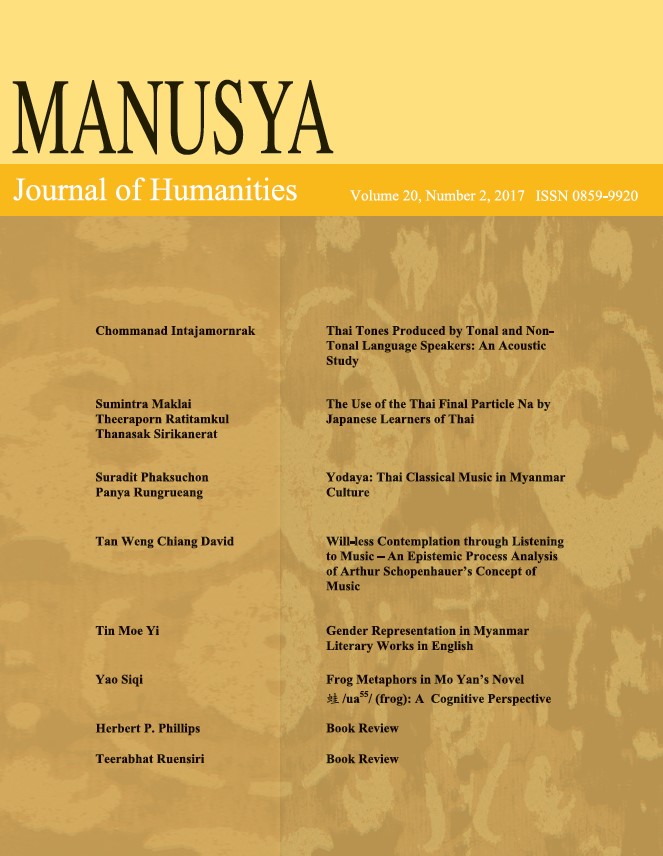Title : Thai Tones Produced by Tonal and Non-tonal Language Speakers: An Acoustic Study
Author(s) : Chommanad Intajamornrak
Pages : 1-26
Abstract in English : The purpose of this paper was to analyze
the acoustic characteristics of Thai tones
produced by tonal language speakers,
namely Vietnamese and Burmese, and
non-tonal language speakers, namely
Khmer and Malay, in citation form and
connected speech. The test words in
citation form and connected speech
comprised five tones, which were the Mid
tone, the Low tone, the Falling tone, the
High tone, and the Rising tone occurring
in non-checked and checked syllables. The
informants were twenty-four Vietnamese,
Burmese, Khmer, and Malay native
speakers with high experience in Thai
(three speakers for each language) and
low experience in Thai (three speakers for
each language). The informants’ speech
was recorded directly on to a computer.
The fundamental frequencies (F0) of tones
were measured using Praat Version 5.1.43
and then converted to semitones.
The results show that the acoustic
characteristics of Thai tones produced by
Vietnamese, Burmese, Khmer, and Malay
native speakers are typologically different.
The speakers with high experience in Thai
seem to produce Thai tones in nonchecked
syllables and checked syllables
better compared to those with low
experience in Thai in citation form,
regardless of typological difference.
However, it is found in connected speech
that the native tonal language speakers of
Vietnamese and Burmese with high
experience in Thai can produce better
Thai tones, i.e. the acoustic characteristics
of the five tones similar to those produced
by Thai native speakers, than the Khmer
and Malay speakers with high experience
in Thai. It can be concluded that
experience measured by years of study,
frequency of usage, and the objectives of
study all influence the ability of second
language speakers to correctly form Thai
tones. Moreover, speaking a tonal native
language does not benefit a speaker
attempting to learn another tonal
language at the first stage of learning.


